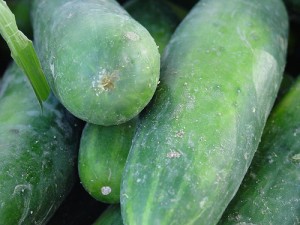Vegetables are gorgeous- the bright colors, the crunch and the variety. The benefits from eating vegetables stack up quickly: reducing your risk of certain chronic diseases, keeping your weight in check and boosting your immune system. Eating vegetables is one of the best things you can do for your diet and your body.
I recently started eating most vegetables whole, raw and with the peel on. Sometimes they don’t look as pretty (especially carrots), but the taste is sweet and delicious. The peel stays put so I can reap the full benefit from the veggies-lots of fiber and nutrients. Nature made them that way, and let’s face it- peeling is a pain.
There are a few situations where you SHOULD peel vegetables:
- If the outer skin or peel has a bitter taste.
- When the produce isn’t organic and could be laden with heavy doses of pesticides.
- If your digestive system can’t handle peels.
If you are buying organic and the peel is edible and tastes OK-resist the temptation to peel. Most likely you are peeling away important nutrients.
5 vegetables that don’t need to be peeled
Carrots
Most nutrients in a carrot are actually in, or just below the skin. Carrots are an excellent source of carotene and other phenolic compounds, which are both antioxidants. Carrots’ antioxidant compounds help protect against cardiovascular disease and cancer and also promote good vision, especially night vision. We just cut scrub whole carrots and cut the ends off and they are ready to eat.
Cucumbers
Cucumbers are low in calories and high in vitamin K, anti-oxidants and potassium. Cucumber peel is a good source of dietary fiber that helps reduce constipation and offers some protection against colon cancers.
Beets
Beets are full of phytonutrients called betalains. Betanin and vulgaxanthin have been shown to provide antioxidant, anti-inflammatory, and detoxification support. We slice our beets and roast them with a little olive oil and salt. If the ends of the beet are a mess it is easy enough to slice a little off, but peel on is the way to go.
Eggplant
This is one vegetable that looks much prettier with the skin on. The skin of purple eggplants is packed with a powerful antioxidant called nasunin, one of a type of flavonoid called anthocyanins present in many fruits and vegetables with red, blue and purple hues (berries, beets and red cabbage, to name a few). Choose the purple varieties when you shop, and leave the skin on.
Potatoes
The potatoes skin has loads of fiber and vitamins and helps the potato hold on to its essential nutrients when it’s cooked. The skin is also chock full of vitamin K, potassium, copper and iron. My kids love potatoes with the skin, sliced thinly and roasted until brown and crunchy with olive oil and a bit of salt.
Each of these vegetables just need a good scrub and they are ready to eat. Eating the whole vegetable creates less waste and is all around better for you.
Do you peel your vegetables? Are you willing to try eating them with the peel on?
If this post helped you, please share it. And please grab our RSS feed or sign up for free e-mail updates to get more Groovy Green info hot off the press! Thanks!
*Top photo used under Creative Commons from Andy Wright




